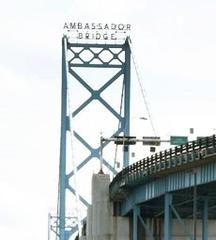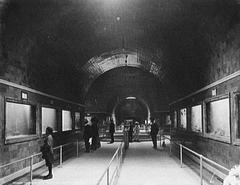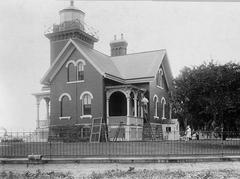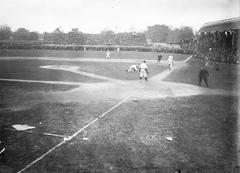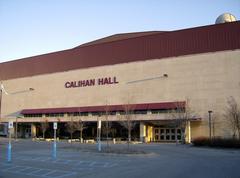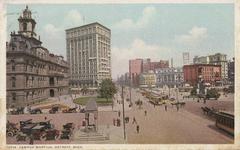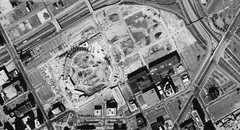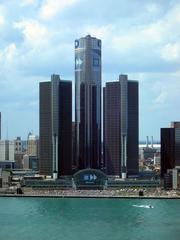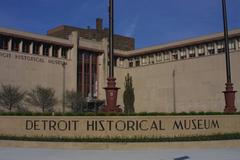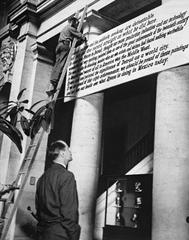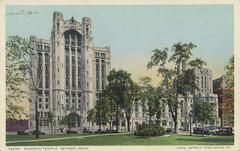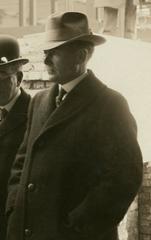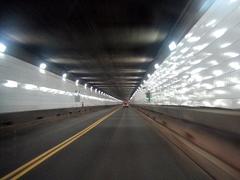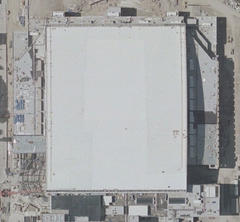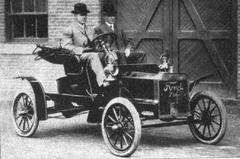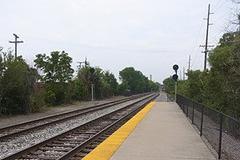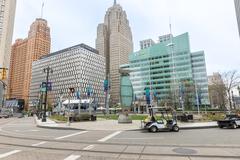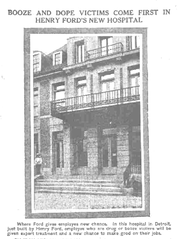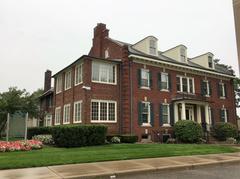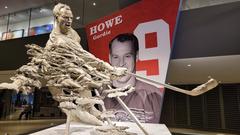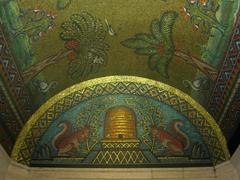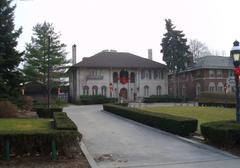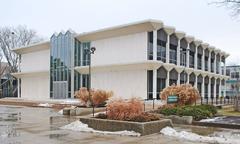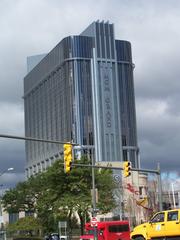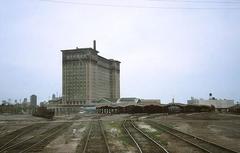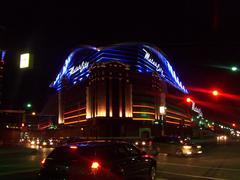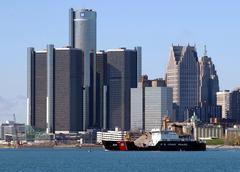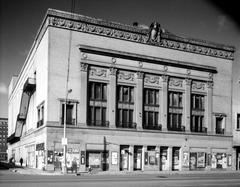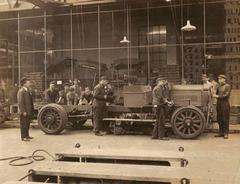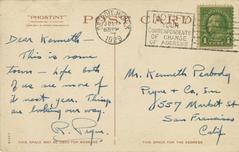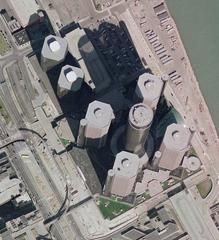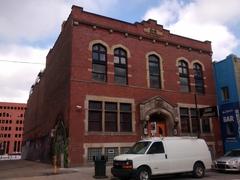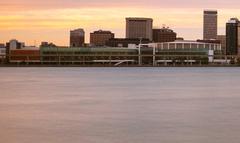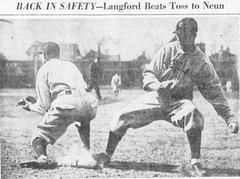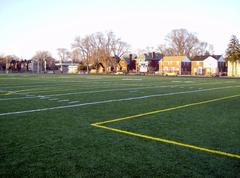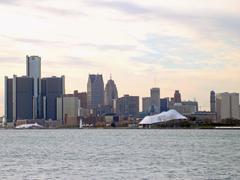
Michigan Bell And Western Electric Warehouse
Michigan Bell and Western Electric Warehouse Detroit: Visiting Hours, Tickets, and Historical Sites Guide
Date: 04/07/2025
Introduction
The Michigan Bell and Western Electric Warehouse stands as an enduring symbol of Detroit’s industrial might and architectural innovation. Built between 1929 and 1930 and designed by Smith, Hinchman & Grylls, this Art Deco masterpiece played a pivotal role in the development of Michigan’s telecommunications infrastructure. Today, the building is celebrated both for its remarkable design and its adaptive reuse as a center for community services, reflecting Detroit’s resilience and ongoing revitalization. This guide covers the warehouse’s history, architectural significance, visitor information (including hours and tickets), accessibility, tours, and nearby attractions—everything you need to plan an enriching visit to this iconic Detroit landmark.
Table of Contents
- History and Significance
- Architectural Features
- Role in Telecommunications Development
- Preservation and Adaptive Reuse
- Visitor Information
- Nearby Attractions
- Frequently Asked Questions (FAQ)
- Summary and Call to Action
- References and Further Reading
History and Significance
Detroit’s remarkable industrial expansion in the early 20th century was matched by a surge in population and technological progress. The Michigan Bell and Western Electric Warehouse, located at 882 Oakman Boulevard (also known as 14300 Woodrow Wilson Avenue), was constructed to store and distribute telecommunications equipment statewide. Commissioned by the Michigan Bell Telephone Company and Western Electric—the Bell System’s manufacturing division—the warehouse was strategically positioned on a railroad spur for efficient logistics, supporting both Detroit’s explosive growth and the region’s modernization (Detroit Historical Society; Detroit Historic Structures).
At its peak, the facility employed hundreds, serving as a vital hub for the storage, assembly, and distribution of cables, switchboards, and telephone equipment. Its importance extended beyond Detroit, connecting Michigan to a rapidly evolving national telecommunications network (AT&T Archives).
Architectural Features
Designed by Wirt Rowland of Smith, Hinchman & Grylls (now SmithGroup), the warehouse is a striking example of Art Deco industrial architecture. The building’s 12-story tower is characterized by:
- Distinctive Facade: Orange brick cladding, a two-story limestone arch above the main entrance, and black-plated aluminum doors.
- Ornamentation: Intricate Art Deco reliefs, geometric motifs inspired by the optimism of the machine age, and stylized terracotta details that crown the structure.
- Structural Innovation: Steel frame construction with concrete slabs, allowing expansive open floor plans suitable for industrial use.
- Interior Finishes: Marble-clad public areas, including the lobby and stairways, reflecting the era’s emphasis on grandeur and permanence.
These features not only define the building’s aesthetic but also underscore its functional adaptability—a key to its longevity (Buildings DB; Curbed Detroit).
Role in Telecommunications Development
From its opening in 1930 until the late 1950s, the warehouse was integral to Michigan’s telecommunications infrastructure. Serving as both a storage and distribution center, it supported the rapid expansion of telephone service across the state and played a crucial role in training technical staff and supporting Detroit’s industrial workforce.
The building’s design facilitated the efficient movement of heavy equipment, while its location on a rail spur connected it directly to the Detroit Terminal Railroad, enabling swift shipment to and from the facility. During World War II, it also supported defense communication networks, adapting to the city’s shifting industrial priorities (Detroit City Report, PDF).
Preservation and Adaptive Reuse
After serving the Bell System until 1958, the warehouse’s industrial function declined in parallel with Detroit’s broader economic shifts. Recognizing its historical and architectural importance, preservationists secured the building’s listing on the National Register of Historic Places in 2009 (National Park Service; Wikipedia).
Today, the structure is known as the NSO Bell Building, home to the Neighborhood Service Organization. Its transformation into a center for supportive housing and community services is a model of adaptive reuse, maintaining architectural integrity while meeting contemporary social needs (NSO Bell Building).
Visitor Information
Location and Getting There
- Address: 14300 Woodrow Wilson Avenue, Detroit, MI 48238
- Transportation: Easily accessible by car with parking in the surrounding area. Public transportation options and rideshare services provide convenient access from downtown and across Detroit (Roadtrippers).
Visiting Hours and Tickets
- Exterior Viewing: The building’s remarkable Art Deco facade is viewable at any time during daylight hours.
- Interior Access: Regular public access to the interior is limited due to its current function as a residential and service facility.
- Special Events and Tours: Occasional guided tours and open houses are organized by the NSO or local historical societies. Admission is typically free, but advance registration may be required for tours or special events. Always check the NSO website or local heritage listings for current schedules and ticketing information.
Accessibility
- Wheelchair Access: The exterior is accessible, though some sidewalks may be uneven due to ongoing urban development.
- Interior Accessibility: For special events, the building provides accessible entrances and elevators. Visitors with mobility needs should contact the NSO in advance to confirm arrangements.
Tours and Photography
- Guided Tours: Tours offer insights into the building’s history, architecture, and restoration. These are infrequent and usually tied to special events—monitor event calendars for opportunities (Detroit Historical Society Events).
- Photography: The exterior is highly photogenic. Interior photography is generally restricted to protect resident privacy.
Nearby Attractions
The warehouse is located near several other notable Detroit landmarks, making it easy to combine visits:
- Detroit Historical Museum
- Detroit Institute of Arts
- Guardian Building and Fisher Building (Art Deco icons)
- Motown Museum
- Henry Ford Museum (short drive away)
- Midtown and New Center districts for dining, shopping, and cultural experiences (Visit Detroit; Tourist Places Guide)
Frequently Asked Questions (FAQ)
Q: What are the visiting hours?
A: The building’s exterior may be viewed at any time. Interior access is by special arrangement or during scheduled events.
Q: Is there an admission fee?
A: Exterior viewing is free. Tours or events may require advance registration; most are free or have a nominal fee.
Q: Are guided tours available?
A: Yes, but infrequently. Check the NSO website or Detroit Historical Society Events for updates.
Q: Is the warehouse wheelchair accessible?
A: The exterior is accessible; interior access during events accommodates wheelchairs.
Q: Can I take photos?
A: Exterior photography is encouraged; interior photography is generally restricted.
Q: What else is nearby?
A: Midtown, New Center, and several museums and historic sites are within a short drive (Visit Detroit).
Summary and Call to Action
The Michigan Bell and Western Electric Warehouse is a cornerstone of Detroit’s architectural and industrial heritage. Its Art Deco design and role in expanding the state’s telecommunications network provide a window into the city’s past, while its adaptive reuse demonstrates the power of preservation to serve contemporary community needs.
To explore this landmark:
- View the facade year-round at 14300 Woodrow Wilson Avenue, Detroit.
- Monitor the NSO website and local historical organizations for tour opportunities and special events.
- Download the Audiala app for audio tours and the latest updates on Detroit’s historic sites.
- Plan your visit in conjunction with other Detroit landmarks for a deeper appreciation of the city’s history and ongoing transformation.
By engaging with the Michigan Bell and Western Electric Warehouse, you experience not just a building, but Detroit’s enduring spirit of innovation, resilience, and community.
References and Further Reading
- Detroit Historical Society
- U.S. Census Bureau
- SmithGroup History
- AT&T Archives
- Federal Communications Commission
- Detroit Free Press
- National Park Service
- Detroit Historic Structures
- Wikipedia
- Revise Sociology
- Tourist Places Guide
- Roadtrippers
- NSO Bell Building
- Curbed Detroit
- Detroit Historical Society Events
- Lonely Planet
- Visit Detroit

